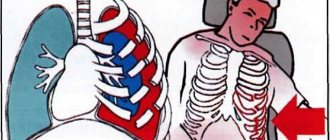- What is hemodialysis?
- Indications for hemodialysis
- Contraindications to hemodialysis
- How does hemodialysis work?
- Hemodialysis-related procedures
- Diet for hemodialysis
- Complications of hemodialysis
| Hemodialysis is a method of extrarenal blood purification, indispensable in some critical conditions, often becoming a regular procedure. Hemodialysis is often associated with the treatment of kidney dysfunction, and final recovery usually becomes possible only after transplantation. |
Briefly about the famous
Our kidneys have the most direct impact on the duration and quality of life. Therefore, a person is faced with kidney failure; he, in fact, begins to poison himself with metabolic waste products. In addition, any of us is susceptible to infection from external sources - for example, acetone vapor. This does not go unnoticed, especially when the kidneys fail.
Hemodialysis has been known for a long time. The technique itself is justified by the need to control the course of pathologies that are in one way or another associated with a sharp increase in the blood of breakdown products, as well as intermediate products. This occurs due to liver or kidney failure, the process of metastasis, poisoning with medicinal products, alcohol-containing substances, and poisons. In oncological practice, one often has to deal with the problem of intoxication due to tumor growth, which in turn triggers the process of increasing the concentration of pathological proteins, which can lead to the death of the patient.
At its core, the procedure is intended to remove harmful substances from the blood. First of all, it is used to treat people with kidney failure. The devices used in the procedure are capable of filtering urea, toxins, and excess fluid from the blood and helping to increase, sometimes significantly, the lives of patients. Medical statistics say: more than a thousand people per million people need to purify their blood.
Complications of hemodialysis
Hemodialysis is a procedure that patients have been forced to resort to for many years. It is not without a certain amount of complications, these include:
- imbalance syndrome - manifested by headache, nausea, muscle cramps, increased blood pressure and, ultimately, fainting;
- arterial hypotension - often develops due to excessive ultrafiltration during dialysis;
- pyrogenic reactions - for example, an increase in body temperature during a hemodialysis session is caused by bacterial contamination of the equipment and endotoxemia;
- air embolism - is a consequence of the entry of air into the system from different parts of the apparatus, as a result of which the clinical picture of embolism of the cerebral or pulmonary vessels develops;
- bleeding - nasal and gastrointestinal bleeding occur more often, hemorrhages in the brain, in the pericardial cavity and subdural hematomas are less common;
- perforation of the dialyzer membrane,
- the addition of a secondary infection - infection with the hepatitis B virus predominates in both patients (7-20%) and clinic staff, with anicteric forms accounting for 30%, and the HBS antigen is detected only in 40-50% of all cases of the disease; in addition to viral hepatitis, pneumonia often develops;
- aluminum intoxication - most often a consequence of its increased concentration in the water used to make dialysate; an increase in its concentration in the blood 1-2 years from the start of dialysis treatment, and sometimes earlier, leads to the so-called aluminum disease, manifested by osteopathy (joint pain, muscle weakness, risk of bone fractures) and encephalopathy (speech disorders, dementia, moderate hydrocephalus).
- acquired kidney cysts - especially often found in patients on program hemodialysis for more than 2 years, are localized in most cases in the cortex, often calcified, and in 3% of patients they are combined with malignant kidney tumors.
How to do it
So, hemodialysis is the purification of the blood from toxic substances and excess fluid, carried out using an “artificial kidney” apparatus. The principle of operation is simple. The membrane of the “artificial kidney” allows to “pump out” toxins from the blood of patients. They fall into a special solution, but proteins do not get there, again thanks to the membrane. Ultrafiltration of toxins and excess fluid then begins. It is clear that such manipulations must be carried out under highly sterile conditions. The “artificial kidney” is connected through a tube to the patient’s circulatory system. A special pump drives blood through the apparatus; Once cleansed, it is re-delivered to the patient. This procedure does not interfere with the patient: for five to six hours, while it is being performed, he can read or watch TV. The “artificial kidney” performs several functions at once:
- Normalizes electrolyte levels;
- Maintains acid-base balance;
- Removes metabolic products;
- Prevents the formation of blood clots;
- Removes excess water, etc.
Indications for hemodialysis
The quality of the patient’s blood requires the use of hemodialysis for the following pathologies:
- acute renal failure;
- chronic renal failure;
- severe disturbances in the electrolyte composition of the blood;
- overhydration, life-threatening (pulmonary edema, cerebral edema, etc.), not reduced by conservative therapy;
- poisoning with poisons and drugs (able to pass through the hemodialysis membrane);
- alcohol poisoning.
Treatment with program hemodialysis is indicated for the following clinical indicators:
- a decrease in glomerular filtration to 5 ml/min, which approximately corresponds to an increase in creatinine levels to 1.1-1.3 mmol/l (if clinical manifestations are severe, hemodialysis should be started as early as possible, already at a clearance of 10 ml/min);
- a drop in daily diuresis below 700 ml;
- the appearance of initial signs of uremic osteopathy, polyneuropathy, uncorrected hyperkalemia (7 mmol/l and above), hyperhydration, precomatous state, indomitable vomiting, unbearable itching, pericarditis, hemorrhagic diathesis.
Indications and contraindications
As already noted, hemodialysis is applicable for renal failure and for patients with other pathologies. Thanks to it, a person’s life can be saved and its quality improved. However, there are contraindications for use:
- Chronic hepatitis;
- Cirrhosis of the liver;
- Serious problems with the nervous system;
- Active tuberculosis;
- Problems with blood clotting;
- And also age 70+.
The procedure is well recommended for patients with significant tumor intoxication, as well as in preparation for chemotherapy.
Intravenous laser irradiation of blood
Diet for hemodialysis
Nutrition during hemodialysis plays a far from secondary role. Diet preparation should aim to minimize the accumulation of waste products in the blood, and therefore the following nuances are taken into account:
- the basis of the daily menu is a balanced amount of protein products, that is, chicken, meat and fish;
- It is necessary to carefully control the amount of potassium-containing products and not abuse them (the risk of heart complications increases) - these are salt substitutes, some fruits (bananas, oranges), vegetables (potatoes), chocolate, dried fruits and nuts;
- it is necessary to carefully monitor the amount of fluid consumed (the risk of edema, arterial hypertension, complications from the heart and lungs increases) - aim for an increase in body weight of no more than 5% between procedures;
- limit the amount of table salt, which causes thirst and retains fluid in the body;
- limit the consumption of phosphorus-rich foods if the doctor has prescribed medications to normalize the metabolism of calcium and phosphorus, which often happens - these are liver, heart, sea fish, egg yolks, nuts and seeds, bran;
It is strongly recommended that persons on hemodialysis not hide cases of dietary violations from their attending physician. No one is immune from these, but the doctor’s awareness of this will allow him to adjust the hemodialysis program in the most favorable way for the patient.
Kinds
Currently, several types of procedures are practiced in the world:
- At home;
- In an outpatient setting;
- In a hospital setting.
They all have their advantages and disadvantages. For example, home manipulation, practiced in Europe, is simple and safe and does not force the patient to wait in line at the clinic, but it is expensive and requires special training. In Russia, they practice carrying out the procedure in a hospital or outpatient setting.
Types of “Artificial kidney” devices differ in the structure of dialyzers:
- Lamellar;
- Capillary.
Both have proven themselves and have characteristic advantages.
Sources
- “Dialysis. Overview”, NHS, [https://www.nhs.uk/conditions/dialysis/](https://www.nhs.uk/conditions/dialysis/)
- Nephrology (clinical guidelines) edited by E.M. Shilova, A.V. Smirnova, N.L. Kozlovskaya, Moscow, “GEOTAR-Media”, 2016.
- Takeki Ishida, Kenichi Kono, Yuusuke Nishida, Masahiro Yoshida. Functional recovery in post-stroke patientson hemodialysis during the convalescent phase: a comparison with those notundergoing hemodialysis [Electronic resource] // Renal Replacement Therapy, 2021.
- Alexandre Lautrette, Christophe Leroy. Response to the letter to the Editor Regional citrate anticoagulation for intermittent hemodialysis in the intensive care [Electronic resource] // Annals of Intensive Care, 2021.
- Izaya Nakaya. Temporary central venous catheter at hemodialysis initiation and reasons for use: a cross-sectional study [Electronic resource] // Renal Replacement Therapy, 2021.
- Yuka Sugawara, Masao Iwagami, Kan Kikuchi. Infection prevention measures for patientsundergoing hemodialysis during theCOVID-19 pandemic in Japan: a nationwidequestionnaire survey [Electronic resource] // Renal Replacement Therapy, 2021.
Alternatives?
Today there are alternative methods of blood purification. In addition to the “artificial kidney”, other methods are also used, based on the principle of a membrane of limited permeability.
These are, for example, peritoneal dialysis and intestinal dialysis.
In the first case, the role of the filter is performed by the peritoneum, in the second - by the wall of the colon.
Both methods can be used if hemodialysis is contraindicated. Both are much cheaper, but they are also less effective. repeated laboratory diagnostics.
Forecast
With the timely initiation of adequate therapy, it will be possible to minimize damage to the kidney tissue, which will recover over time, as well as with changes in external factors, and the person will be able to live a full life without dialysis at all. For example, pregnant women after giving birth most often return to life without a filtration device.
Similar situations happen with babies who are born prematurely or with underdeveloped kidneys. The newborn is placed in a special box and connected to a dialysis machine. Within 4-8 weeks, as a rule, the kidneys complete their development, acquire the ability to function, and the child is transferred to the neonatology ward, where he is examined for the ability to exist without the help of equipment, after which he can go home to his parents.
Life expectancy and disability
In Russia, a record has been set for life expectancy on hemodialysis - 30 years. On average, an “artificial kidney” prolongs the life of patients with end-stage renal failure by 15–20 years. But this is subject to strict adherence to the diet and lifestyle prescribed by doctors:
- regular visits to the dialysis center;
- taking prescribed medications;
- compliance with the daily routine;
- exclusion of contacts with infectious patients.
Seriously ill patients who need outside help are assigned disability group 1. Patients on hemodialysis who have not lost the ability to self-care are assigned to group 2.
Kidney disease is not a death sentence
Friday, March 22, 2013 / Newspaper “Surgut Tribune”
At the end of 2012, the reconstructed infectious diseases building of the Surgut District Clinical Hospital opened, where the Dialysis Center, which has been operating at the hospital since 2001, celebrated its housewarming. The history of the center began in 1993, when, by order of the chief physician of the Surgut Central Regional Hospital, a detoxification and hemodialysis department was opened, and then an intensive care anesthesiology department in 1994. Many years have passed since then, the department was reorganized twice, the necessary equipment was purchased, the number of beds was increased, and treatment methods were improved. However, the leader of these metamorphoses and the main commander of first the department, then the hemodialysis center, invariably remained the same person - anesthesiologist-resuscitator Sergei Malashenko. In a conversation with ST, he explained what dialysis is and what help a Surgut resident whose kidneys have stopped functioning can count on.
- Who is prescribed dialysis?
- The Dialysis Center deals with kidney diseases, the course of which is complicated by end-stage renal failure, in which a person’s kidneys no longer function. Dialysis is also called renal replacement therapy, which today includes two types: hemodialysis and peritoneal dialysis. With the help of such therapy, the patient can continue to live, but without this type of assistance, the patient, unfortunately, dies. The bulk of our patients, somewhere around 90%, come to us having already passed the stage of the clinic and hospital (nephrology department), where they are examined in advance. This is necessary, since hemodialysis is a fairly serious operation; there are patients for whom such a procedure is generally contraindicated, despite the fact that they will not be able to live any longer. And such situations arise. In addition to dialysis, a surgical treatment method is used to treat end-stage renal failure - kidney transplantation.
- How is hemodialysis different from peritoneal dialysis?
- Hemodialysis is a procedure for cleansing the body using a special filter through which the blood is “driven”. In this way, toxins and water that accumulate in the blood during the day are removed from the body. Peritoneal dialysis is when instead of a filter, the peritoneum is used, into which a catheter is previously implanted. Through this catheter, the patient independently purifies the blood at home using a solution we have prepared in advance. At the dialysis center, the patient monitors the quality of dialysis once a month and receives therapy adjustments.
- What diseases can cause chronic renal failure (CRF) in the body?
- Naturally, these are diseases that cause impaired kidney function, such as inflammatory colds, primarily.
The second is congenital kidney disease. The third is diabetes. The fourth is hypertension. And these are just the main reasons. By the way, diabetes is the No. 1 kidney problem in the world. Diabetes, in turn, can be caused by diseases of the pancreas. In general, this disease “hits” such organs as the heart, kidneys and eyes, and blood vessels, of course. In addition, patients with glomerulonephritis, pyelonephritis, polycystic kidney disease, as well as people with congenital anomalies and kidney diseases are at risk. Various acute diseases and poisonings can also lead to chronic kidney disease. I would like to note that the condition of end-stage renal failure does not occur instantly, but usually develops over years. CNP has five stages of the disease, and only in the fifth stage are patients indicated for program hemodialysis. - How often should a patient undergo dialysis?
- Standard therapy involves dialysis three times a week for 4 hours, for a total of 12 hours of hemodialysis per week, but sometimes more, up to 18 hours.
- And so all your life?
- Yes. Or transplantation of a donor kidney.
- How long can a person live without dialysis?
- From two weeks to a month.
- How many patients is the center designed for, and how many people are undergoing therapy in your center at the moment?
- We are treating 149 patients. There are 26 dialysis beds per shift, and we work in four shifts, that is, around the clock. We also have six additional beds, which we use if necessary, in emergency cases, for example, if the device breaks down or a new patient arrives.
- Are the services at the center paid?
- Everything is free for those who have a compulsory health insurance policy.
- As far as I know, not only Surgut residents undergo treatment at the Surgut Dialysis Center...
- There are several such dialysis centers in our district: in Nizhnevartovsk, Khanty-Mansiysk, Kogalym and Nyagan. The entire territory of the district is divided between these branches. We include the entire central region of Ugra: Surgut, Surgutsky district, Nefteyugansk, Nefteyugansk district, Pyt-Yakh and populated areas. We accept patients for hemodialysis from any settlement in the territory we supervise.
- Do patients come to you at their own expense?
- The social service compensates for the travel of the sick. Today, patients coming from Pyt-Yakh, Lyantor and Nefteyugansk, Surgut region are provided with transport, and the social service compensates for the cost of travel. But there is also a category of patients who get to the center on their own, at their own request.
“Surgut Tribune” No. 51 from 03/21/1013 Kristina Golub
Chance for a new life
If a person does not want to be a lifelong hostage to such procedures, he can stand in line at an organ transplant center. The kidney is the most popular organ for transplantation today. How quickly the transplant is performed depends largely on luck. Sometimes a donor organ is available within a week, but in some cases the patient has to wait for years.
At the same time, we must not forget that after such an operation it is necessary to constantly take medications and be observed by a nephrologist in order to avoid organ rejection. In addition, you will have to lead a healthy lifestyle, eliminate bad habits, not self-medicate, and take urine and blood tests at least once a year. If the main indicators change, you must urgently contact a nephrologist.









